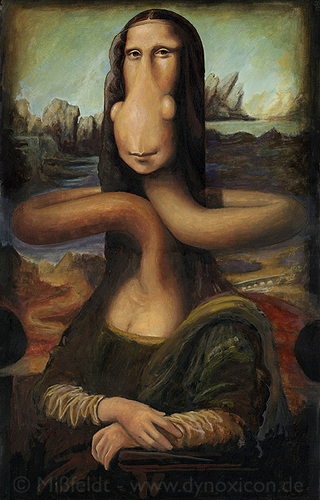 Lamh Foistenach Abu!
Lamh Foistenach Abu!
Posted on 01/10/2009 5:50:38 PM PST by nickcarraway
DRAWINGS by Leonardo da Vinci on show at a Welsh coastal town were previously stored there in a wartime “secret cave of masterpieces”, researchers have discovered.
A travelling exhibition of 10 of the Italian genius’s works is currently on display at the National Library of Wales, Aberystwyth.
But workers delving into the institution’s archives last night revealed how the images once arrived in the town on the eve of World War II, along with other priceless masterpieces.
Medi Jones-Jackson, communications officer for the library, said: “It’s been discovered that the works were originally here 70 years ago – evacuated from London in 1939 due to the outbreak of war and kept in Aberystwyth until 1945.”
As well as pieces by Michelangelo and Raphael, the National Library of Wales said the town’s secret “Aladdin’s cave” also stored a wealth of priceless historic literature for safekeeping at the outbreak of World War II, such as the Trafalgar Memorandum of Nelson, Scott’s Antarctic Journals, the Magna Carta and the Saxon Chronicles.
“It’s amazing to think some of the most historically important documents and artworks of our times were kept safe here in Aberystwyth,” she added.
“It’s also a little-known fact that the library built a cave underneath the building to house the most precious collections from art and literature, which come from many cultural institutions from across the UK.”
The story of the evacuation began in 1933, when WA Ormsby-Gore (later Lord Harlech) – in his role as Commissioner of Works in Stanley Baldwin’s Government – called together the directors of all major cultural institutions to consider the safe storage of their most valuable collections in the event of a war in Europe.
Within hours of the declaration of war in 1939, collections from many of Britain’s cultural institutions were crated up and sent via rail to Aberystwyth.
The collections of the British Museum took up 25 containers, with the material weighing more than 90 tons.
Many items had to be shipped minus their frames and glass to save on space and weight.
Among the precious hoard were famous Greek Bibles, the Codex Sinaiticus and the Codex Alexandrinus; the works of Wycliffe and Chaucer; and letters by the kings and queens of England.
“There was work by Wolsey, Cranmer, Raleigh, Drake, Bacon and Cromwell,” Ms Jones-Jackson added.
“Literary documents included autographs and holographs of Shakespeare, Spenser, Bacon, Milton, Dryden and numerous other authors, as well as musicians, painters and persons eminent in other fields of human activity.
“Rare books were stored such as the Folios and Quartos of Shakespeare, Paradise Lost and Pilgrim’s Progress.
“Meanwhile work by English artists included Blake, Girtin, Cotman, Cox and Turner.”
Ms Jones-Jackson said one of the most fascinating aspects of the evacuation was the library’s decision to build an underground cave to house some of the works.
“The library’s prominent position on the hillside lent itself as the perfect navigation tool, but the risk of stray bombs dropped by aircraft chased away from the industrial centres of Eastern England or South Wales was an ever-present risk.
“An underground repository was built into the rock-side of Grogythan (“The Hangman’s Hill”) a few hundred yards from the library building.
“The cave was built with specialised ventilation and heating systems to protect the valuable items placed inside and ensure that humidity and heat levels were kept at the optimum levels for protecting the valuable material.
“By August 1940 the move to the tunnel of priority material was complete.”
Delwyn Tibbot, whose father Gildas Tibbot was deputy librarian during the war years, said: “Every night my father, a policeman and a member of the British Museum staff, would go down to the tunnel to ensure that everything was as it should be.”
By May 1946, all material housed in the library during the war was returned by rail to their collective institutions and the cave has remained empty ever since.
Cultural historian Professor Peter Stead said Wales, with its rocky mountains and numerous caves, had been a “natural choice” when it came to preserving national treasures.
“London was bombed for 96 consecutive nights during the Blitz – the east was worst hit but they expected the centre to be targeted too,” he said.
“So the great artworks needed to be removed for safekeeping.
“Paintings don’t like too much light so, of course, the caves were ideal places to store them.
“Moving them to Wales would have involved a huge operation at quite an expense.
“The Welsh seaports such as Swansea were being bombed during the war but Mid Wales to West Wales was a fairly safe place.
“Welsh artefacts had to be preserved too. I think the Brangwyn Hall wall panels, produced by Sir Frank Brangwyn, which were originally intended for the House of Lords, were stored in Dan-yr-Ogof show caves.”
The exhibition, on loan from the Royal Collection at Windsor to celebrate Prince Charles’ 60th birthday, continues at the National Library of Wales until February 7.
 Lamh Foistenach Abu!
Lamh Foistenach Abu!

gnip...

...certainly not, on the American East/West Coast and Great Lake Area....maybe Australia or the Moon 







That looks like Harry Reid.
I had a serious discussion about this with my art professor, suggesting they replace the originals with fakes, especially in the Louvre and at the Vatican. I shared an article on an Iraqi artist, posted on FR, who has to paint in the abstract style. The paintings on buildings will be destroyed. Question, what kind of art will be approved by Jesus when He rules?

Certainly NOT the Library at Alexandria.
Disclaimer: Opinions posted on Free Republic are those of the individual posters and do not necessarily represent the opinion of Free Republic or its management. All materials posted herein are protected by copyright law and the exemption for fair use of copyrighted works.